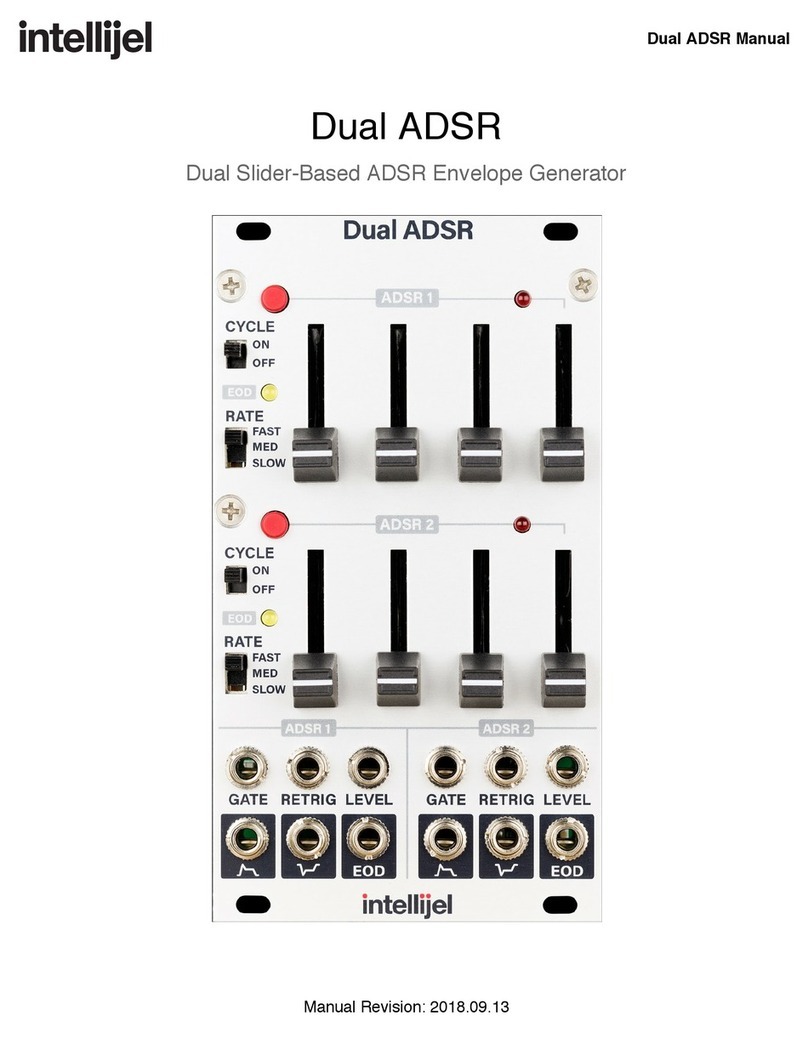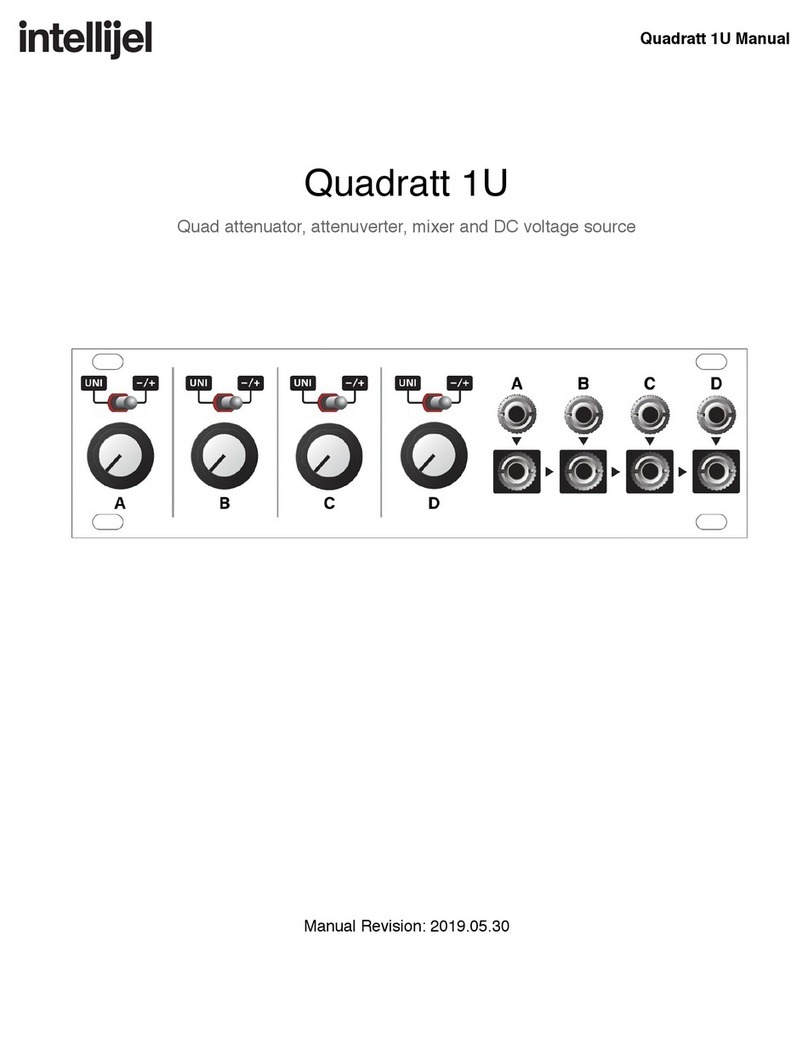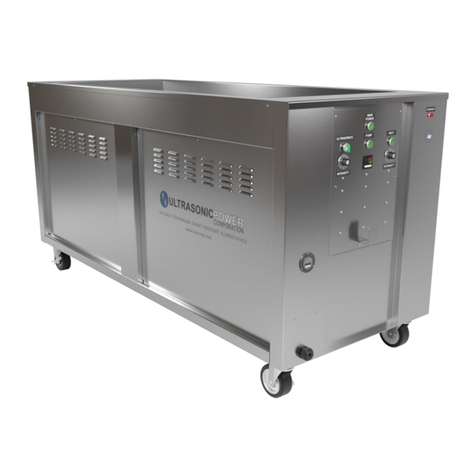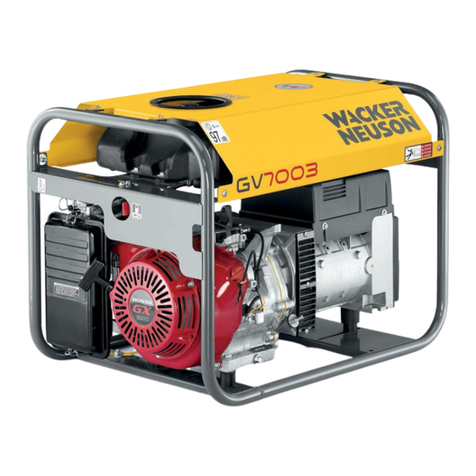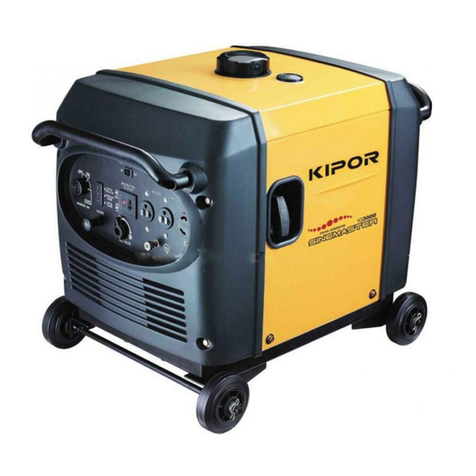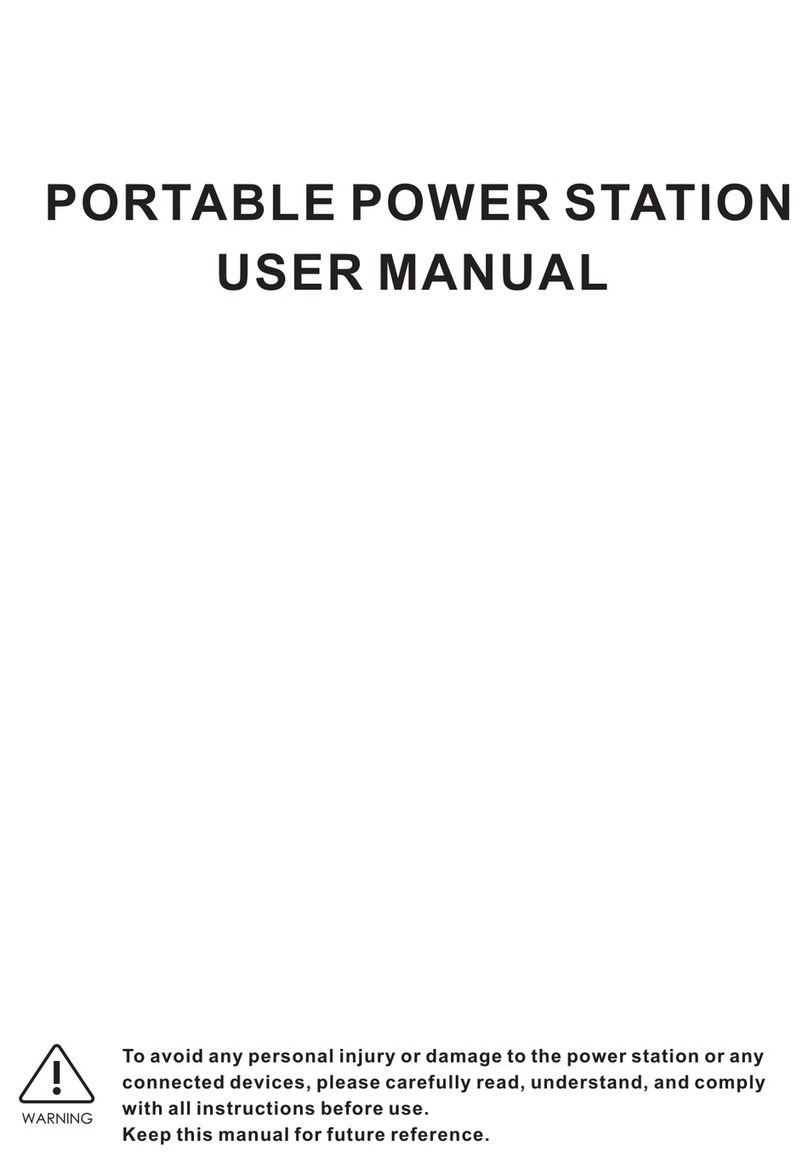Intellijel Quadrax User manual

Quadrax 1.1 Manual
Quadrax
(Including Optional Qx Expander)
4-Channel CV-Controllable Function Generator
With Cycling, Pulse Burst Generation and Morphing LFO
Firmware Version: 1.1
Manual Revision: 2020.03.04

Quadrax 1.1 Manual
Table of Contents
Compliance 3
Installation 4
Installing Your Module 5
Connecting the Optional Qx Expander Module 6
Overview 7
Quadrax Front Panel 9
Controls 9
Inputs and Outputs 14
Channel Mode Options 16
AD Mode 16
AHR Mode 17
CYCLE Mode 18
BURST Mode 18
LFO Mode 19
Channel Link Options 20
No Link 20
Trigger Link 21
End Of Rise Link 21
End of Fall Link 22
Multiple Triggers 22
Burst Mode - In Detail 23
LFO Mode - In Detail 26
LFO Mode (STANDARD) 26
Multiple Beat Synchronized LFOs 28
STANDARD LFO Waveshapes and Morphing 29
LFO Mode (ALTERNATE) 30
Page 1

Quadrax 1.1 Manual
Making CV Assignments 32
Enter/Exit CV Assignment Mode 32
Programming the CV Matrix 33
Clearing CV Assignments 36
Using the Optional Qx Module 37
EOR/EOF for AD Mode 37
EOR/EOF for AHR Mode 38
EOR/EOF for CYCLE Mode 38
EOR/EOF for BURST Mode 39
EOR/EOF for LFO Mode 40
System Mode 41
Firmware Version Display 42
Firmware Change Log 43
Technical Specifications 45
Page 2

Quadrax 1.1 Manual
Compliance
This device complies with Part 15 of the FCC Rules. Operation is subject to the
following two conditions: (1) this device may not cause harmful interference, and
(2) this device must accept any interference received, including interference that
may cause undesired operation.
Changes or modifications not expressly approved by Intellijel Designs, Inc. could
void the user’s authority to operate the equipment.
Any digital equipment has been tested and found to comply with the limits for a
Class A digital device, pursuant to part 15 of the FCC Rules. These limits are
designed to provide reasonable protection against harmful interference when the
equipment is operated in a commercial environment. This equipment generates,
uses, and can radiate radio frequency energy and, if not installed and used in
accordance with the instruction manual, may cause harmful interference to radio
communications.
This device meets the requirements of the following standards and directives:
EMC: 2014/30/EU
EN55032:2015 ; EN55103-2:2009 (EN55024) ; EN61000-3-2 ; EN61000-3-3
Low Voltage: 2014/35/EU
EN 60065:2002+A1:2006+A11:2008+A2:2010+A12:2011
RoHS2: 2011/65/EU
WEEE: 2012/19/EU
Page 3

Quadrax 1.1 Manual
Installation
Intellijel Eurorack modules are designed to be used with a Eurorack-compatible case and power
supply. We recommend you use Intellijel cases and power supplies.
Before installing a new module in your case, you must ensure your power supply has a free power
header and sufficient available capacity to power the module:
● Sum up the specified +12V current draw for all modules, including the new one. Do the same for
the -12 V and +5V current draw. The current draw will be specified in the manufacturer's technical
specifications for each module.
● Compare each of the sums to specifications for your case’s power supply.
● Only proceed with installation if none of the values exceeds the power supply’s specifications.
Otherwise you must remove modules to free up capacity or upgrade your power supply.
You will also need to ensure your case has enough free space (hp) to fit the new module. To prevent
screws or other debris from falling into the case and shorting any electrical contacts, not leave gaps
between adjacent modules, and cover all unused areas with blank panels. Similarly, do not use open
frames or any other enclosure that exposes the backside of any module or the power distribution
board.
You can use a tool like ModularGrid to assist in your planning. Failure to adequately power your
modules may result in damage to your modules or power supply. If you are unsure, please contact us
before proceeding.
Page 4

Quadrax 1.1 Manual
Installing Your Module
When installing or removing a module from your
case always turn off the power to the case and
disconnect the power cable. Failure to do so may
result in serious injury or equipment damage.
Ensure the 10-pin connector on the power cable is
connected correctly to the module before
proceeding. The red stripe on the cable must line
up with the -12V pins on the module’s power
connector. Different modules use different ways to
indicate the -12V pins. Some may be labelled with
“-12V;” a white stripe next to the -12V pins; the
words “red stripe;” or some combination of these.
Additionally, some modules may have shrouded
headers, thus preventing backward connections.
Most modules will come with the cable already connected but it is good to double check the
orientation. Be aware that some modules may have headers that serve other purposes so ensure the
power cable is connected to the right one.
The other end of the cable, with a 16-pin connector,
connects to the power bus board of your Eurorack
case. Ensure the red stripe on the cable lines up
with the -12V pins on the bus board. On Intellijel
power supplies the pins are labelled with the label
“-12V” and a thick white stripe:
If you are using another manufacturer’s power
supply, check their documentation for instructions.
Page 5

Quadrax 1.1 Manual
Once connected, the cabling between the module and power supply should resemble the picture
below:
Before reconnecting power and turning
on your modular system, double check
that the ribbon cable is fully seated on
both ends and that all the pins are
correctly aligned. If the pins are
misaligned in any direction or the ribbon
is backwards you can cause damage to
your module, power supply, or other
modules.
After you have confirmed all the
connections, you can reconnect the
power cable and turn on your modular
system. You should immediately check
that all your modules have powered on and are functioning correctly. If you notice any anomalies, turn
your system off right away and check your cabling again for mistakes.
Connecting the Optional Qx Expander Module
Connect the power cable between the 10-pin Qx power connector and one 16-pin power socket on
your eurorack system’s powered bus board as described above.
Using the I2C cable supplied with your Qx
module, connect one end to the 6-pin I2C
connector on the Qx and the other end to
either of the two I2C ports on your Quadrax
module (it doesn’t matter which of Quadrax’s
two I2C ports you use). Be sure to align the
red stripe with the white line on the Qx circuit
board.
IMPORTANT! : Always power down the
modules before connecting or disconnecting
an I2C cable.
Page 6

Quadrax 1.1 Manual
Overview
The Intellijel Quadrax consists of four independent, CV-controllable channels, each of which can be
configured to perform any one of the following functions:
● an AD (Attack, Decay) envelope
● an AHR (Attack, Hold, Release) envelope
● a cycling envelope (resulting in a unipolar LFO)
● a pulse burst generator
● a morphing, bipolar LFO (plus a chaotic Low Frequency Vacillator)
The envelopes all feature a continuously variable response curve, ranging from logarithmic through
linear to exponential, and each stage can be as snappy as 0.3 ms to as lengthy as 20 seconds.
When set to Burst mode, the channel generates a rising or falling burst of pulses, with full control over
the length of the pulse burst, and the rate and shape of the bursts within it, along with whether the
bursts increase or decrease in amplitude over the burst length.
AD, AHR, Cycling and Burst modes have a user-selectable maximum output level of either 5V or 10V.
LFO mode offers control over the frequency and waveshape, while providing a unique morphing
feature that creates numerous variations of the selected waveshape. LFOs can be either free-running
or beat-synchronized using the channel’s TRIG input.
Each of the five modes (AD, AHR, Cycling, Burst and LFO) provide both standard and alternate
modes of operation, giving you even more nuanced control. Specifically, the alternate functionality for
AD, AHR and CYCLE modes changes the response curves of the envelope — enabling RISE to have
a logarithmic shape while FALL’s shape is exponential, and vice-versa. BURST Mode’s alternate
function replaces the Square/Sine morphing pulse shape with a Tilting Sawtooth shape. The alternate
LFO operation enables a chaotic voltage source (which we call a “Low Frequency Vacillator (LFV)”,
and the knobs control the rate of vacillations, along with the per-cycle variance and the amount it’s
slewed.
Channels can be chained together to create complex multi-stage envelopes, with each channel
triggered by the previous channel’s trigger input, end-of-rise, or end-of-fall. This enables multiple
function generators to fire simultaneously, or it enables the creation of complex multi-stage envelopes
by allowing the linked function to fire either at the end of the previous function’s rise time, or at the end
of its fall time.
Page 7

Quadrax 1.1 Manual
Four freely-assignable, step-attenuverted CV inputs are capable of modulating any or all of the
various parameters across all four channels using the built-in CV matrix, with built-in attenuversion for
each assignment.
1 v/oct CV inputs enable you to use LFO and Burst modes as oscillators.
Quadrax remembers its current state (Mode and CV assignments, channel links, etc) and retains that
state even if power is removed, meaning Quadrax will always turn on in exactly the same state as you
last left it.
Use the optional Qx module to add individual outputs for each channel’s End-of-Rise and End-of-Fall
triggers.
Page 8

Quadrax 1.1 Manual
Quadrax Front Panel
Controls
1. RISE (x4) - Each channel has its own RISE knob,
whose function depends on the channel’s mode
assignment, as selected by the
MODE/DESTINATION button [6] .
●AD , AHR and CYCLE modes: This knob
controls the rise time (attack) of the function
(rising from zero to the maximum level). Slower
times will create a fade-in effect while faster
times are used for snappy percussive sounds.
When fully counterclockwise, rise time is about
0.3 ms, slowing to about 50 ms at the ‘noon’
position. Rotating past noon results in
increasingly lethargic rise times, up to about
20 seconds when fully clockwise.
●BURST Mode : The RISE knobs sets the rate at
which pulses are generated within the burst
envelope.
When the RISE knob is fully counter-clockwise,
Quadrax generates pulses at a rate of 0.05 Hz,
and when fully counterclockwise at about
3.33 kHz.
See BURST Mode - In Detail later in this
manual for more information.
Page 9

Quadrax 1.1 Manual
●LFO Mode : The RISE knob functions as a
RATE knob for the LFO.
With nothing patched into the TRIG input, the
LFO is free-running and the knob sets the LFO
rate from 0.05 Hz (20 sec) when fully
counterclockwise to around 3.33 kHz (0.3 ms)
when fully clockwise. Using CV extends the
range even further.
If you patch a clock into the TRIG input, the
LFO will synchronize to the clock, and the RISE
knob changes the multiplication/division of the
incoming clock. At the ‘noon’ position, the rate
equals the incoming clock. Rotating the knob
counterclockwise divides the clock, achieving a
rate 1/64 of the clock rate when fully
counterclockwise. Rotating the knob clockwise
multiplies the clock rate, achieving a rate 64
times faster than the incoming clock when fully
clockwise. For more information about LFO
Mode, see LFO Mode , later.
2. FALL (x4) - Each channel has its own FALL knob,
whose function depends on the channel’s mode
assignment, as selected by the
MODE/DESTINATION [6] button.
● AD , AHR and CYCLE modes: Sets the amount
of time it takes for the function to fall from its maximum value back to zero. In AHR mode this
will act as the release time. In Cycle mode the total time of RISE plus FALL sets the frequency
of the cycle.
When fully counterclockwise, fall time is about 0.3 ms, slowing to about 50 ms at the ‘noon’
position. Rotating past noon results in increasingly lethargic fall times, up to about 20 sec
when fully clockwise.
●BURST Mode: The FALL knobs sets the overall length of the pulse burst envelope.
Rotating the knob increases the length of the pulse burst from about 0.3 ms when fully
counterclockwise to around 20 seconds when fully clockwise. Using CV extends the range
even further.
●LFO Mode: The FALL knob becomes a MORPH knob (for a STANDARD LFO), and is used to
create numerous interesting and morphable variations on the basic waveform set by the
Page 10

Quadrax 1.1 Manual
SHAPE [3] knob. For the ALTERNATE LFO (a Low Frequency Vacillator), the FALL knob
becomes a VARIANCE knob, setting the maximum amount of variance for each vacillation.
These are detailed in the LFO Waveshapes and Morphing section, later in this manual).
3. SHAPE (x4) - Each channel has its own SHAPE knob, whose function depends on the channel’s
mode assignment, as selected by the MODE/DESTINATION button [6] .
●In AD , AHR and CYCLE modes: This knob changes the shape of the RISE and FALL curves.
At the ‘noon’ position, the curves are linear, which is traditionally the shape used to control
exponential VCAs.
Other shapes depend on whether the
AD, AHR and CYCLE modes are set to
STANDARD or ALTERNATE operation
(toggled by long-pressing (>1 sec) the
MODE/DESTINATION [6] button).
In STANDARD operation : Rotating the
knob clockwise from center results in
an increasingly exponential shape. This
is the curve found on many classic
envelope generators, and is
traditionally used to control linear
VCAs. Exponential shapes tend to
have more of a plucked character.
Rotating the knob counterclockwise
from center results in an increasingly
logarithmic shape.
IN ALTERNATE operation: Rotating
the knob clockwise from center results
in an increasingly spikey shape, since
an exponential curve is applied to the
attack stage, and a logarithmic curve is
applied to the decay/release stage.
Rotating the knob counterclockwise
from center results in an gradual, bell-like shape, since a logarithmic curve is applied to the
attack stage, and an exponential curve is applied to the decay/release stage.
Page 11

Quadrax 1.1 Manual
● In BURST Mode : The knob shapes the overall burst envelope plus the waveform of each
pulse within that envelope. For more information, see BURST Mode - In Detail , later in this
manual.
● In LFO Mode : The knob controls the LFO
shape, which is further defined by the FALL [2]
knob. LFO Mode’s interaction of these two
knobs is discussed in LFO Mode - In Detail ,
later in this manual.
4. LED - The brighter this LED (x4), the higher the
corresponding function generator’s amplitude. If the
LED is green , then the function is generating a
positive voltage. A red LED indicates a negative
voltage.
5. LINK/CV button - This button (x4) has two
functions, LINK and CV ASSIGN.
● LINK : The button’s primary function (as
indicated by the graphics beneath) is to
determine whether or not the prior channel
triggers this channel and, if so, how.
Specifically, the LINK button on Channel 2
determines if/how it’s triggered by Channel 1;
Channel 3’s button determines if/how it's
triggered by Channel 2; and Channel 4’s button
determines if/how it’s triggered by Channel 3.
Channel 1’s button determines if/how it’s
triggered by Channel 4. Push a channel’s LINK
button repeatedly to cycle through the various
triggering options. See Channel Link Options
for more information.
●CV ASSIGN : The button’s secondary function (as indicated by the label above it) is to assign
the four CV inputs to one or more destinations for each channel. Long-press the LINK/CV
button to enter CV Assignment mode. See Making CV Assignments for more information.
Page 12

Quadrax 1.1 Manual
6. MODE/DESTINATION button - This button (x4) has
several functions: In normal operation, it selects the
channel’s MODE, while in CV Assignment mode, it
sets the DESTINATION (and attenuversion) of the
CV input. Additionally, long-pressing the button
toggles the current mode between its STANDARD
functionality and its ALTERNATE functionality.
When used as a MODE button, it sets each
channel to one of five modes. Push it repeatedly to
cycle through the various mode options, which are:
●AD : Attack/Decay envelope, where RISE
controls the envelope’s attack time and FALL
controls the decay time. AD envelopes
complete their entire cycle upon receiving a
trigger at the corresponding TRIG input. AD
envelopes ignore the gate time of the incoming
signal.
●AHR : Attack/Hold/Release envelope, where
RISE controls the envelope’s attack time and
FALL controls its release time. The attack
portion of the envelope is triggered by the rising
edge of a gate signal sent to the corresponding
TRIG input. The envelope holds (sustains) its
maximum value for as long as the gate signal is
high, then triggers the release stage when the
gate signal goes low.
●CYCLE : Cycle mode behaves like a unipolar LFO, with the RISE and FALL times determining
the rate and shape of the LFO.
●Burst : Burst mode generates a series of pulses that repeat at a variable rate (set the the RISE
knob) within a length of time (set by the FALL knob), whose pulse shapes and overall
amplitude curve are defined with the SHAPE knob. This mode is discussed thoroughly in
BURST Mode - In Detail , later in this manual.
●LFO : LFO mode turns a channel into a bipolar, beat-syncable LFO with multiple basic
waveshapes and some advanced waveshape morphing capabilities. This mode is discussed
thoroughly in LFO Mode - In Detail , later in this manual.
Once in a MODE, long-press (>1 sec) the MODE/DESTINATION button to toggle between
STANDARD operation and ALTERNATE operation, as described later in LFO Mode - In Detail .
Page 13

Quadrax 1.1 Manual
In CV Assignment mode, this button assigns
destinations to CV inputs, and controls the amount
of attenuversion applied. The brighter the button,
the more a CV input affects a destination, with
green indicating positive modulation and red
indicating negative modulation. The operation of
the DESTINATION button is described fully in
Making CV Assignments .
Inputs and Outputs
A. TRIG Inputs (x4) - Patch a trigger or gate signal
here to launch the function generator. There are
four TRIG inputs — one for each of the four
function generators.
In LFO mode, the TRIG input functions as a clock
input, and the RISE (RATE) knob functions as a
clock divider/multiplier, allowing beat-synchronized
LFOs. Because the TRIG inputs have jack
detection, you can have free-running LFOs by
simply leaving the TRIG input disconnected.
B. OUTS (x4) - Outputs for each of the four channel
function generators.
Channels assigned to AD , AHR , CYCLE or BURST
modes generate a unipolar voltage, which you can
set to either 5V or 10V (with 10V being the factory default). To change this setting:
1. Hold down Channel 4’s MODE/DESTINATION ( LEVEL ) button while you power on the
module. This puts Quadrax into System Mode .
2. Press the CV A button to toggle max voltage level between 10V ( blue ) and 5V ( green ).
3. Press the flashing red ( LEVEL ) button to save your selection and exit System Mode.
Channels assigned to LFO mode generate a bipolar signal (-5V to +5V).
C. CV Inputs (x4) - Patch control voltages into each jack to modulate one or more user-definable
parameters for any or all of the four channels. Each CV input can control multiple destinations,
and with varying amounts of attenuversion for each.
Page 14

Quadrax 1.1 Manual
CV inputs track 1 v/oct, so (for STANDARD LFO
and BURST modes), it’s possible to use Quadrax
as an oscillator by sending pitch CV to a CV input,
and using it to control the RISE function).
For more information about CV inputs and how to
make assignments, see Making CV Assignments ,
later in this manual.
NOTE: Although the range of CV modulation is
±5V, the CV inputs accept voltages up to ±10V. Any
voltages above or below 5V are simply clipped at
±5V. Use Quadrax’s internal attenuverters (as
described in Programming the CV Matrix ) to dial
down the input voltages.
Page 15

Quadrax 1.1 Manual
Channel Mode Options
Each of Quadrax’s four channels can be assigned to operate in one of five modes:
Pushing the MODE button repeatedly cycles through the various mode options.
AD Mode
When the MODE [6] button is unlit, the channel is
a classic, 2-stage Attack/Decay envelope, where
RISE controls the envelope’s attack time and
FALL controls the decay time. AD envelopes
complete their entire cycle upon receiving a
trigger at the corresponding TRIG input. AD
envelopes ignore the gate time of the incoming
signal.
In STANDARD operation, the RISE and FALL
curves are logarithmic when the SHAPE [3] knob
is counter-clockwise from center, and exponential
when it’s clockwise from center.
In ALTERNATE operation, the RISE curve is logarithmic and the FALL curve is exponential whenever
the SHAPE [3] knob is counter-clockwise from center. When it’s clockwise from center, the curves are
reversed, such that RISE is exponential and FALL is logarithmic.
To toggle between STANDARD and ALTERNATE operation, long-press (>1 sec) the channel’s
MODE/DESTINATION [2] button. The button will pulse when the ALTERNATE operation is enabled.
Page 16

Quadrax 1.1 Manual
AHR Mode
When the MODE button is red , the channel acts
as an Attack/Hold/Release envelope, where RISE
controls the envelope’s attack time and FALL
controls its release time. The attack portion of the
envelope is triggered by the rising edge of a gate
signal sent to the corresponding TRIG input. The
envelope holds (sustains) its maximum value for
as long as the gate signal is high, then triggers
the release stage when the gate signal goes low.
If the gate length is shorter than the rise time, the
envelope will begin to fall before reaching its
maximum value.
ALTERNATE operation: As with AD Mode (discussed above), AHR Mode also supports both
STANDARD and ALTERNATE operation. With AHR Mode active, toggle ALTERNATE on/off by
long-pressing the MODE/DESTINATION [2] button. The button will pulse when the ALTERNATE
operation is enabled, which alters the SHAPE [3] knob’s choice of response curves exactly as
described above. Specifically:
Page 17

Quadrax 1.1 Manual
CYCLE Mode
When the MODE button is green , the channel
produces a cycling AD envelope, which behaves
like a unipolar LFO. The frequency of the cycle is
determined by the overall sum of the RISE and
FALL times. The skewing of the cycle is
determined by the relative amounts of RISE and
FALL, while the curvature is selected by the
SHAPE knob.
The Cycle is free running, and does not require a
TRIG input. However, if a TRIG input is detected,
then the Cycle resets, as shown in the graphic to
the right. GATE times are ignored.
ALTERNATE operation: As with AD Mode and AHR Modes (both discussed previously), CYCLE Mode
also supports both STANDARD and ALTERNATE operations. Toggle ALTERNATE on/off by
long-pressing the MODE/DESTINATION [2] button. The button will pulse when the ALTERNATE
operation is enabled, which alters the SHAPE [3] knob’s choice of response curves exactly as
described in those two modes.
BURST Mode
When the MODE button is yellow , the channel
operates in BURST mode. Burst mode generates
pulses at a programmable rate (using the RISE
[1] knob) within a programmable length of time
(using the FALL [2] knob), whose shape and
amplitude curve are defined with the SHAPE [3]
knob.
For more information, see Burst Mode - In Detail ,
later in this manual.
Page 18

Quadrax 1.1 Manual
LFO Mode
When the MODE button is magenta , the channel operates in LFO mode. In this mode, the channel
becomes a bipolar LFO, with the RISE knob controlling LFO RATE , the SHAPE knob selecting
WAVESHAPE , and the FALL knob controlling a MORPH function that varies the waveshape. For
more information, see LFO Mode - In Detail later in this manual.
LFOs can be beat-synchronized using the channel’s TRIG input, or they can be free-running if the
TRIG input is left unpatched.
Clocked LFO: Send a clock to the channel’s
TRIG input and use the RATE (RISE) knob to
multiply or divide that rate by as much as 64x in
either direction. With the RATE knob straight up
(‘noon’ position), the LFO rate equals the clock
rate.
Unclocked LFO: Leave the channel’s TRIG
input unpatched and use the RATE (RISE) knob
to dial in the desired free-running rate. LFO
frequency can be set from 0.05 Hz (20 sec)
when fully counterclockwise to around 3.33 kHz
(0.30 ms) when fully clockwise. Using CV
extends the range even further.
Page 19
Other manuals for Quadrax
1
Table of contents
Other Intellijel Portable Generator manuals
Popular Portable Generator manuals by other brands

IVT
IVT GN-750B manual
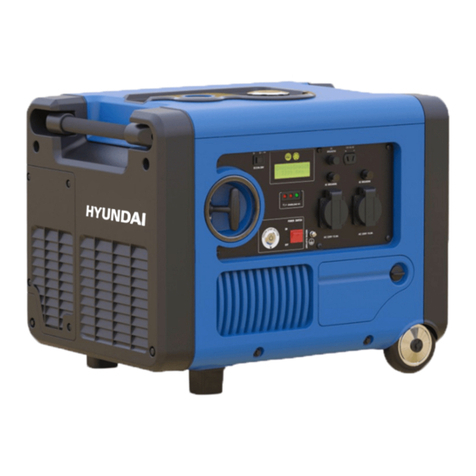
Hyundai
Hyundai HY4000SEi user manual
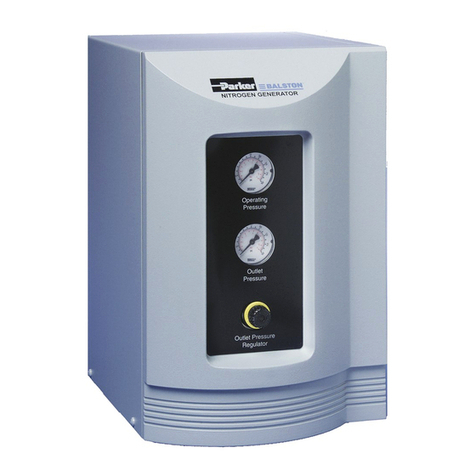
Parker Balston
Parker Balston N2-04 Installation, operation and maintenance manual
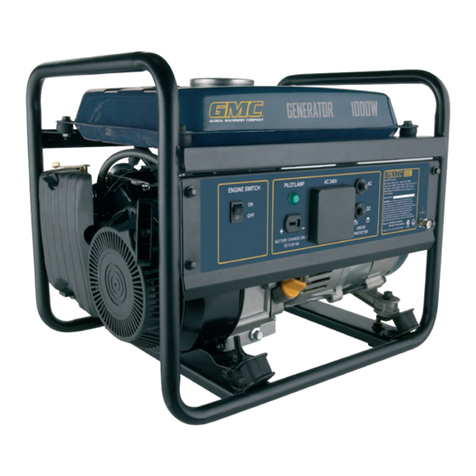
GMC
GMC GEN1000 instruction manual
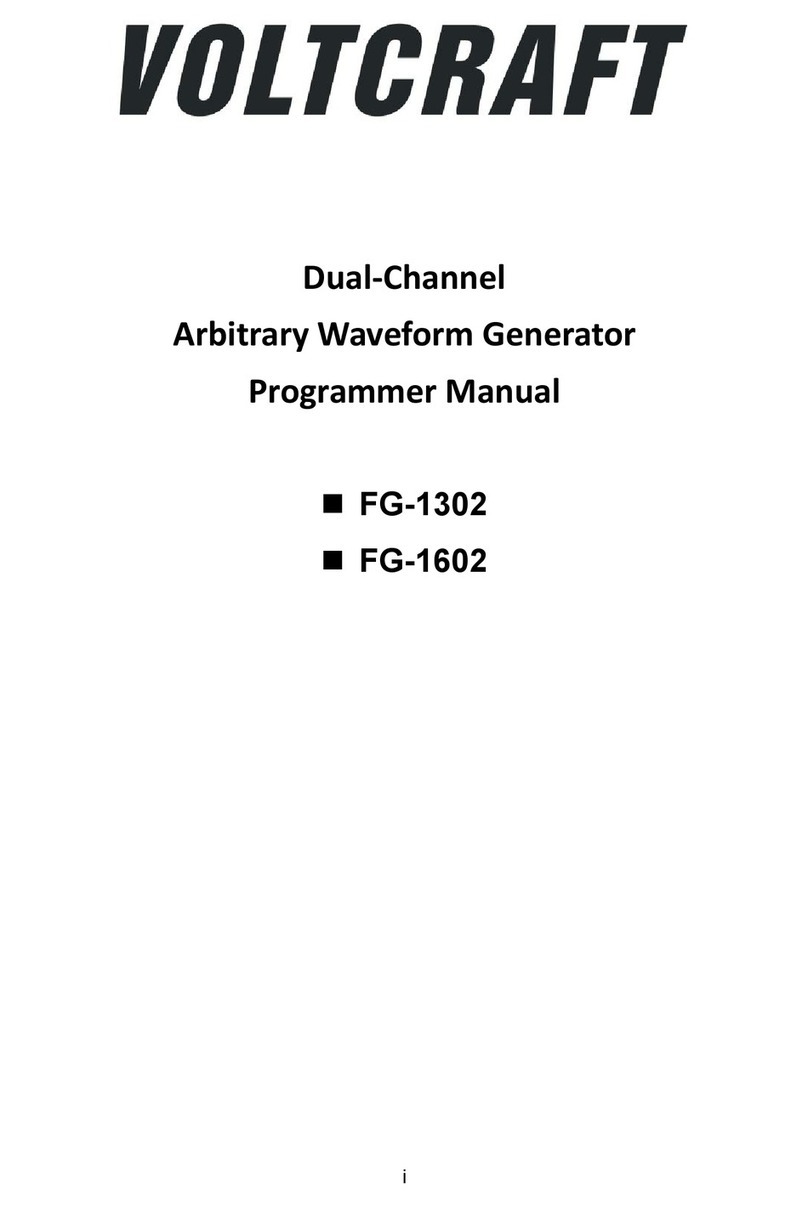
VOLTCRAFT
VOLTCRAFT FG-1602 Programmer's manual
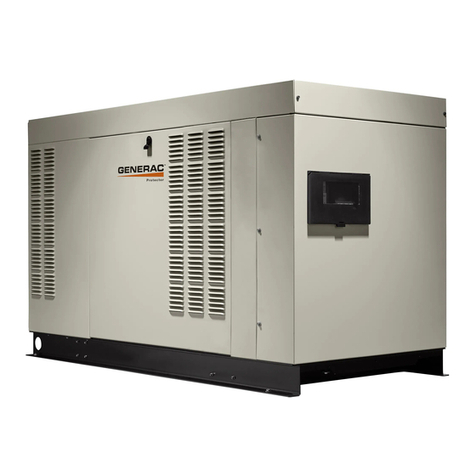
Generac Power Systems
Generac Power Systems Protector Series Installation guidelines

Champion Power Equipment
Champion Power Equipment C75520 user manual

Kuller
Kuller KPG22-2 user manual

Firman
Firman P08008 Operator's manual
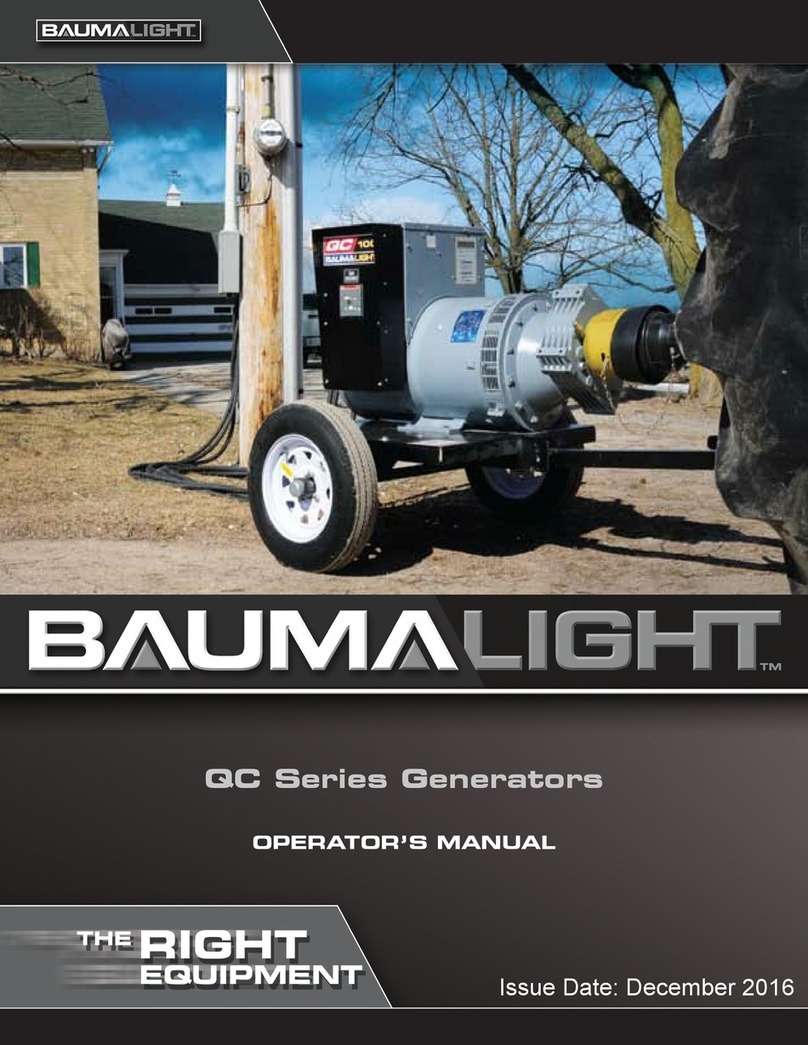
MTB
MTB Baumalight QC Series Operator's manual
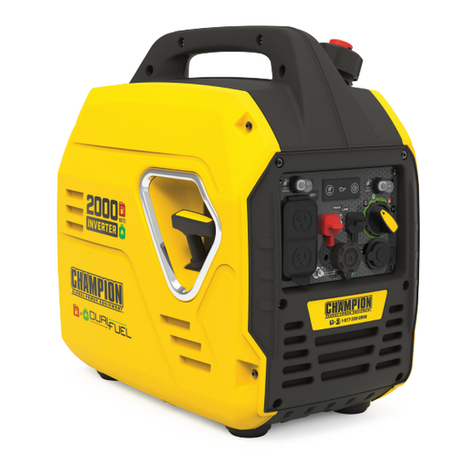
Champion Power Equipment
Champion Power Equipment 100900 quick start guide

Case IH
Case IH AGRICULTURE C9400DFS Operator's manual
